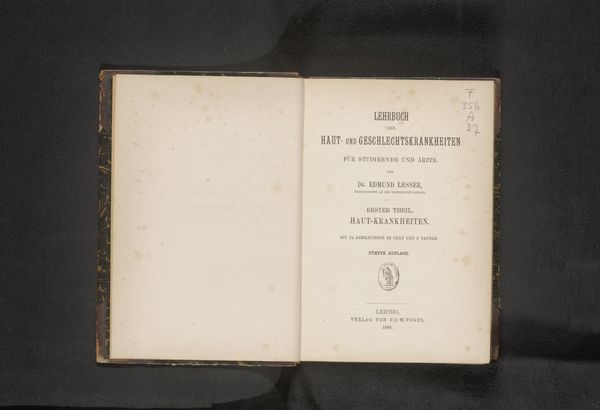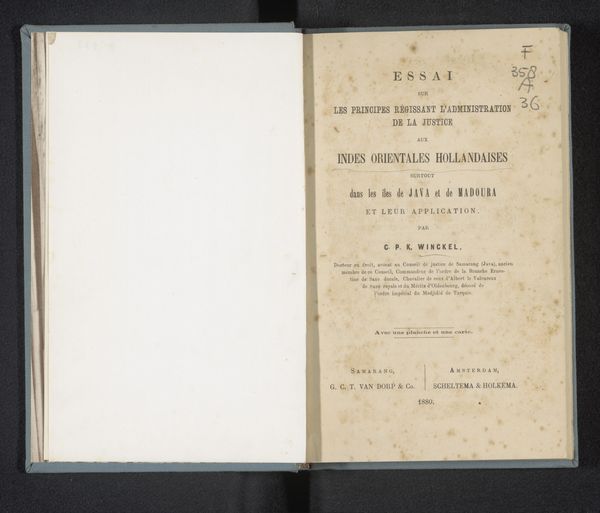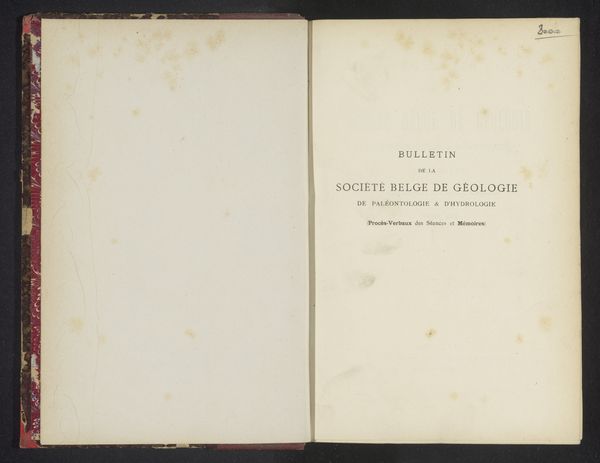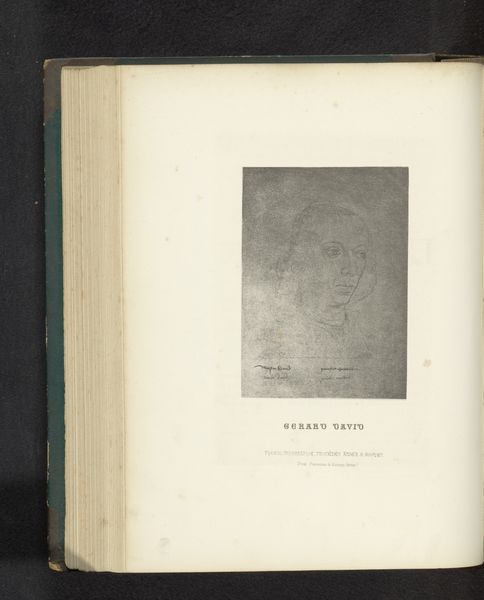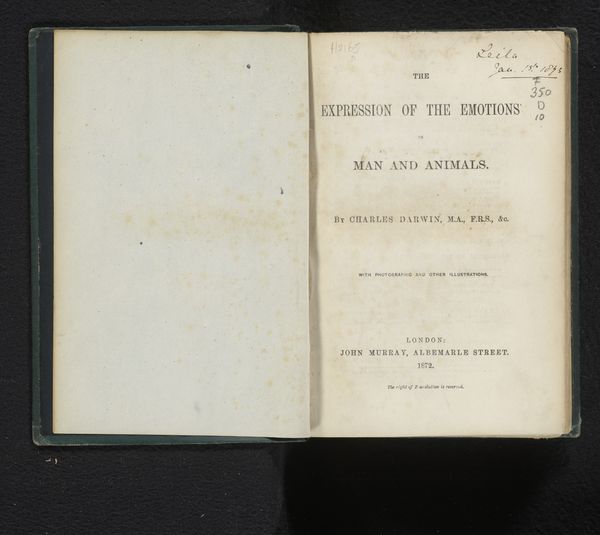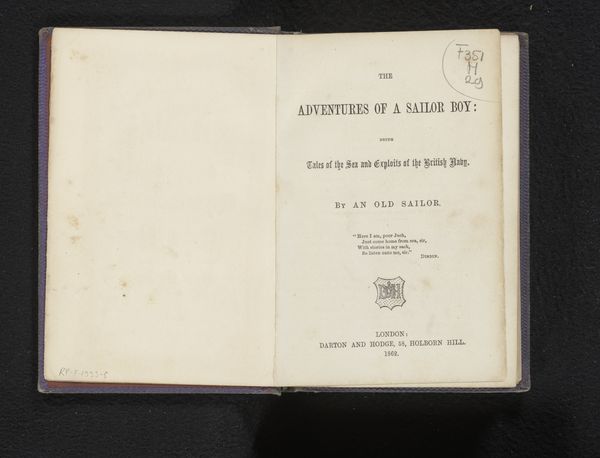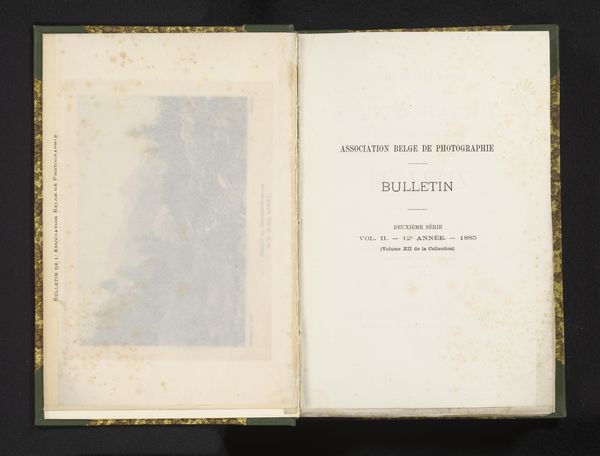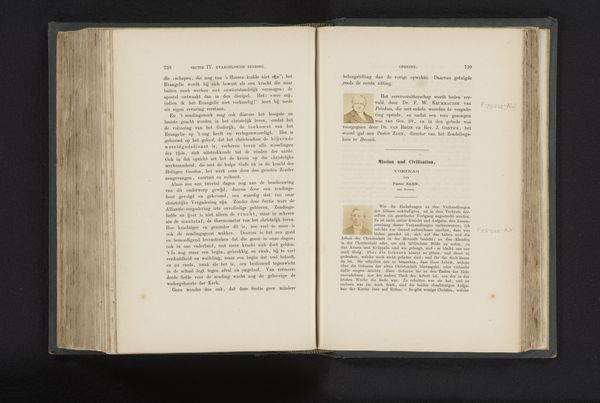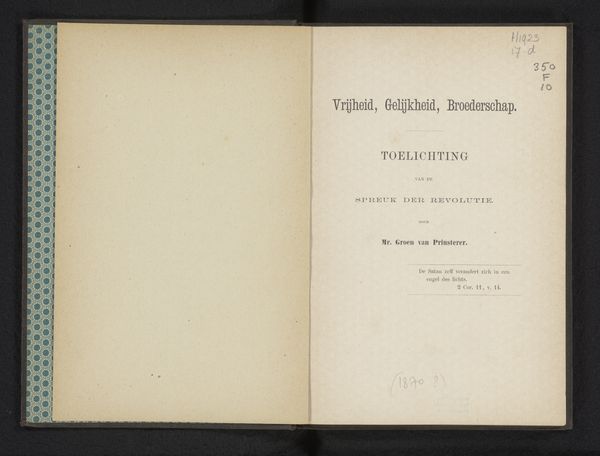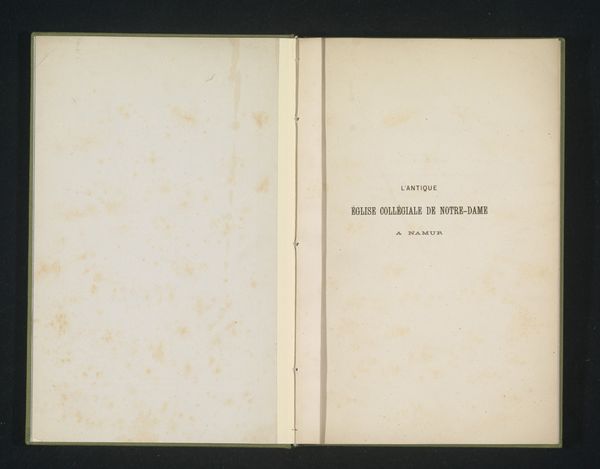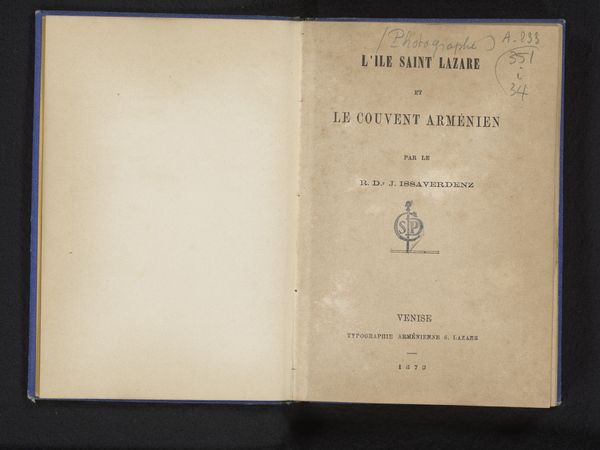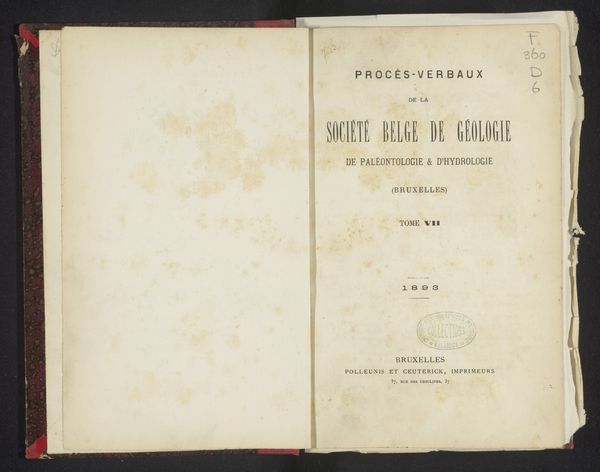
Dimensions: height 196 mm, width 128 mm, thickness 16 mm
Copyright: Rijks Museum: Open Domain
Curator: Here we have "Sprookjens en verhalen van H.C. Andersen," or "Fairy Tales and Stories of H.C. Andersen," published in 1868. What strikes you immediately about this open book? Editor: The delicacy of the imagery, though faded, and the stark contrast with the clean, printed text. It feels like looking into a half-remembered dream. Curator: Indeed. Considering the period, the book’s material construction speaks to the emerging technologies of mass production alongside lingering traditions of fine craftsmanship. The cover suggests it was once bound with care. We see machine-printed text paired with what appears to be a print laid onto paper, indicative of transitional methods. Editor: I'm drawn to that faint image facing the title page. It hints at figures in a landscape. Fairy tales, after all, are rich in symbolism. Are we seeing representations of his well-known characters and landscapes of the imagination? Curator: It’s probable. Remember, Andersen's tales often served as veiled social commentary, so these visual cues would carry significant weight for his contemporary readers. Editor: So, these images are cultural touchstones. Children across generations have imprinted meaning from these visuals; "The Little Mermaid", "The Ugly Duckling," or any number of archetypal scenes come alive here, distilled. It’s fascinating how his narratives endure through repeated cultural invocations. Curator: Precisely. The success of Andersen’s work wasn’t just about imaginative stories. It was about effectively navigating the burgeoning publishing industry to reproduce and distribute morality plays en masse to children from ever increasing classes. Editor: Looking closely now, there is an elegiac melancholy clinging to the image opposite. Given his challenging childhood, Andersen might have used the symbolism in his tales as a medium for examining both society's inequities and his own emotional development. Curator: Yes. And examining it through a Materialist view is just one more way to engage and study this classic volume and remember his humble and hardworking beginnings. Editor: Ultimately, this artifact connects us across time to those essential human themes through potent and evocative visual symbols, while hinting at Andersen's personal journey and how these symbols may reflect this author's lived experience.
Comments
No comments
Be the first to comment and join the conversation on the ultimate creative platform.
